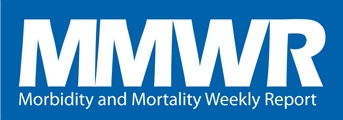MMWR News Synopsis for February 4, 2016
No MMWR telebriefing scheduled for
February 4, 2016
Patterns in Consistent Retention in HIV Care, by Race/Ethnicity — 11 States and the District of Columbia
CDC Media Relations
404-639-3286
African Americans experience a greater burden of HIV than other racial/ethnic groups in the United States but are less likely to receive consistent HIV medical care and treatment. While representing 12 percent of the population, African Americans accounted for 45 percent of new HIV diagnoses in 2013. This analysis uses National HIV Surveillance System data to describe retention in HIV care over three years and identify differences by race/ethnicity. Retention in HIV care and treatment are crucial in achieving sustained viral suppression, which results in reduced transmission to others. This report found that among persons with HIV diagnosed in 2010 and who were alive in December 2013, blacks were less likely to be consistently retained in care during 2011–2013 compared with other racial/ethnic groups (blacks: 38 percent, whites: 49 percent, Hispanics/Latinos: 50 percent). Additionally, black males were less consistently retained in care during this time period compared with black females (35 percent versus 44 percent, respectively).
HIV Testing and Service Delivery among Black Females — 61 Health Department Jurisdictions, United States, 2012–2014
CDC Media Relations
404-639-3286
From 2012 to 2014, CDC-funded HIV testing programs increased the percentage of black females with newly diagnosed HIV infection who were linked to care within 90 days of their diagnosis. Despite this promising trend, only 50 percent were linked to HIV medical care in 2014. Enhanced efforts are needed to diagnose HIV infection among black females and link them to HIV medical care so that they can achieve viral suppression and improved health outcomes. HIV testing and early linkage to HIV medical care are critical for ensuring that HIV positive black females are aware of their status and receive the care they need to achieve viral suppression and improved health outcomes. An analysis of National HIV Prevention Program Monitoring and Evaluation data on CDC-funded HIV testing events and HIV prevention services from 61 health departments and 151 community-based organizations indicated that among black or African American (black) females with newly diagnosed HIV infection, the percentage linked to HIV medical care within 90 days of diagnosis increased from 33.8 percent to 50.1 percent from 2012 to 2014. However, this is below the target set by the National HIV/AIDS Strategy to link 85% of HIV-positive persons to HIV medical care.
QuickStats:
- Percentage of Children and Adolescents Aged ≤ 17 Years Whose Usual Place of Sick Care Is a Clinic, by Race/Ethnicity and Metropolitan Status of Residence — National Health Interview Survey, United States, 2014
###

